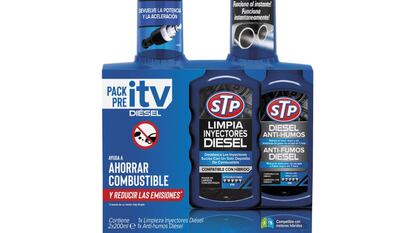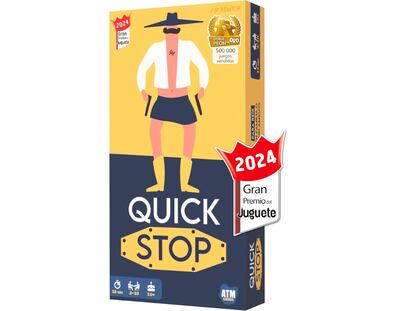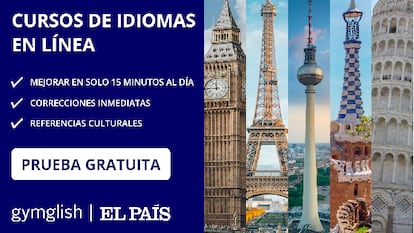Cable sobre la presentaci¨®n de ofertas para las obras del Canal de Panam¨¢
| ID: | 196131 |
| Date: | 2009-03-10 15:14:00 |
| Origin: | 09PANAMA195 |
| Source: | Embassy Panama |
| Classification: | CONFIDENTIAL |
| Dunno: | 07PANAMA1719 08PANAMA320 08PANAMA732 08PANAMA820 08PANAMA851 |
| Destination: | VZCZCXYZ0029 PP RUEHWEB DE RUEHZP #0195/01 0691514 ZNY CCCCC ZZH P 101514Z MAR 09 FM AMEMBASSY PANAMA TO RUEHC/SECSTATE WASHDC PRIORITY 3112 INFO RUCPDOC/DEPT OF COMMERCE WASHDC PRIORITY RULSDMK/DEPT OF TRANSPORTATION WASHDC PRIORITY RUEATRS/DEPT OF TREASURY WASHDC PRIORITY |
C O N F I D E N T I A L PANAMA 000195 SIPDIS DEPT OF COMMERCE - MATTHEW GAISFORD DEPT OF TREASURY - SARA SENICH E.O. 12958: DECL: 03/03/2019 TAGS: ECON, EINV, ETRD, MARR, PM, EWWT SUBJECT: PANAMA CANAL EXPANSION BIDS SUBMITTED REF: A. 2007 PANAMA 1719 B. 2008 PANAMA 320 C. 2008 PANAMA 732 D. 2008 PANAMA 820 E. 2008 PANAMA 851 Classified By: Ambassador Stephenson for reasons 1.4 (b) and (d). ------- SUMMARY ------- 1. (U) Under the lights of TV cameras in a packed auditorium, three consortia, including one led by American firm Bechtel, submitted bids to the Panama Canal Authority (ACP) on March 3 to build the 3.3 billion USD set of locks for the already under-construction third lane of the Panama Canal. The bid submissions end a year-long and often contentious licitation process between the ACP and four pre-qualified consortia (one of which did not submit a bid) that was considered transparent by the Panamanian people and to the consortia. --------------------------- BID SUBMISSION PRESENTATION --------------------------- 2. (U) During a March 3 televised presentation including representatives of three of the four pre-qualified consortia, government officials, the diplomatic corps, President Torrijos, and ACP officials, ACP Administrator Aleman proudly accepted three bids for the 3.3 billion USD third set of locks contract, the centerpiece of the overall 5.25 billion dollar expansion project. The ACP also submitted its own "price proposal" in a sealed envelope, which sets the upper limit of what the ACP will pay. In full view of representatives from the consortia, the public, and the press, the lead ACP Contracting Officer, a Notary Public, and ACP Inspector General theatrically moved a sealed box containing the price proposals by motorcade from the ACP auditorium to a vault in the National Bank of Panama. The three technical proposal bids were immediately brought to a secure, controlled access building. The ACP plans to publicly retrieve the price proposals once the technical proposal evaluations are completed in June or July. A new administration takes office July 1. ------------ TRANSPARENCY ------------ 3. (C) After the presentation, ACP Board Chairman said, "The ACP has created an airtight process," and the ACP "is firmly committed to an open, fair, rigorous and transparent bid process." Supporting the rhetoric, ACP officials have taken steps throughout this process to emphasize the transparency of their actions and the fairness of the bidding process. Every milestone has been accompanied by a public meeting and all licitation documents were available on the ACP website. Recently, the GOP publicized the criteria for choosing a winner by holding a press conference, taking out paid full-page advertisements in leading Panamanian newspapers, holding conference calls with interested parties, publishing official licitation documents, and meeting with the diplomatic corps. The consortia and associated companies have not criticized the transparency of the process to Embassy. While there have not been complaints about transparency, the consortia have complained about the large number of changes to the process. See reftels. ---------------------- BID EVALUATION PROCESS ---------------------- 4. (U) The winner will be determined by a "best value" methodology in which each consortium will receive a combined score based 55% on the technical proposal and 45% on the price proposal. The ACP Inspector General, contract auditor Deliotte, and the lead ACP contracting official will supervise the fifteen member ACP technical evaluation team as they score the bid proposals in isolation. The three technical proposal bids were immediately brought to a secure, controlled access building. According to the ACP, the documents are not permitted to leave the building and the computer systems in the building do not communicate beyond the walls of the building. If the technical evaluation team needs additional technical expertise, forty specialized engineering experts who are on retainer can be immediately brought to Panama to advise the group. All participants have signed confidentiality agreements. The three bids will receive a numeric score based upon criteria published in licitation documents. When the Technical Committee finishes its scoring, the ACP plans another televised presentation in which it will announce the technical scores, and then retrieve and open the price proposals. Immediately, the technical and price scores will be apportioned for a combined score, and a winner will be publicly declared. 5. (C) There are two known future sources of possible turbulence in the process. 1) Sacyr, a Spanish company that leads a consortium, is considered by press accounts and the other consortia to be technically bankrupt. If Sacyr wins, it may not pass the final financial viability review and/or may not be able to meet the contractual obligation of a 400 million USD surety bond. This outcome may jeopardize the viability of current bid process. As reported in reftel E, the concern over Sacyr's financial situation dates to Fall of 2008. 2) The winner's price proposal may be higher than ACP's "price proposal" (Partida Asignada), which is the maximum price the ACP will pay for the locks contract. Under this condition, the ACP would negotiate the price with the winning consortium. The likely outcome would be a descoping of major tasks from the locks contract and then reclassifying these tasks as capital improvements not part of the expansion. Thus, the money would be out of the regular ACP budget. If the ACP and the winning consortium do not come to an agreement, then the ACP will request new price proposals from the three consortia that submitted bids. If this action does not produce a low enough price proposal, the ACP will start a new licitation process or raise the amount it is will to pay. (By Panamanian law, the ACP can only spend 5.25 billion USD on the Expansion Project that includes many major contracts besides the locks contract. If the 5.25 billion USD is exceeded, the National Assembly must approve the extra needed money.) -------------------------------------- FRENCH CONSORTIUM DID NOT SUBMIT A BID -------------------------------------- 6. (C) Over the past six months, ACP officials, representatives from other consortia, and representatives from program manager CH2MHill, informed Embassy officials repeatedly that the French consortium was in disarray and that most consortium members were not working on the proposal. See reftel E. These reports proved true when the French consortium did not submit the bid package. As a result of failing to submit a bid package, the French consortium will not share in the $15 million stipend set aside for the losing consortia. ------- COMMENT ------- 7. (C) The submission of the bids ended a year-long and often contentious licitation process that endured 24 amendments, 51 meetings between the consortia and the ACP to primarily discuss the shifting of technical and financial risk from the consortia back to the ACP, and tension between the Minister of the Canal, the Administrator of the Canal, and the Canal Expansion Program Manager, U.S. company CH2MHill. Past major sources of turbulence included: 1) Originally the European consortia wanted the ACP to accept sovereign guarantees of their financial health. Now the consortia must post bonds. 2) At first, the ACP placed all risk on the consortia; the risk level is now more balanced. 3) In the past month, the ACP added the requirement that the winner of the contract must recertify their financial well-being due to the world economic downturn. To work toward successful ACP solutions, the Embassy actively engaged ACP interlocutors at multiple levels to resolve issues. 8. (C) The reftels outline in detail the ACP brinkmanship to maximize the amount of risk on the consortia while promoting an environment for competitive bids. While the number of amendments and meetings illustrate an initial lack of knowledge in running a multi-billion dollar construction project and a sometimes antagonistic manner to attempt to obtain advantage over the consortia, the ACP designed and implemented a process that was transparent to the Panamanian people and to the consortia. The desire for transparency may be rooted in the professional pride of the ACP and a Panamanian desire to show that without help from others, they can run a first world organization and process. One business rationale for the level of transparency could well be to mitigate the effects of the inevitable litigation from the losing consortia. End Comment. STEPHENSON |
Traducci¨®n autom¨¢tica. Puede que el texto traducido no sea fiel al original
Tu suscripci¨®n se est¨¢ usando en otro dispositivo
?Quieres a?adir otro usuario a tu suscripci¨®n?
Si contin¨²as leyendo en este dispositivo, no se podr¨¢ leer en el otro.
FlechaTu suscripci¨®n se est¨¢ usando en otro dispositivo y solo puedes acceder a EL PA?S desde un dispositivo a la vez.
Si quieres compartir tu cuenta, cambia tu suscripci¨®n a la modalidad Premium, as¨ª podr¨¢s a?adir otro usuario. Cada uno acceder¨¢ con su propia cuenta de email, lo que os permitir¨¢ personalizar vuestra experiencia en EL PA?S.
?Tienes una suscripci¨®n de empresa? Accede aqu¨ª para contratar m¨¢s cuentas.
En el caso de no saber qui¨¦n est¨¢ usando tu cuenta, te recomendamos cambiar tu contrase?a aqu¨ª.
Si decides continuar compartiendo tu cuenta, este mensaje se mostrar¨¢ en tu dispositivo y en el de la otra persona que est¨¢ usando tu cuenta de forma indefinida, afectando a tu experiencia de lectura. Puedes consultar aqu¨ª los t¨¦rminos y condiciones de la suscripci¨®n digital.




























































